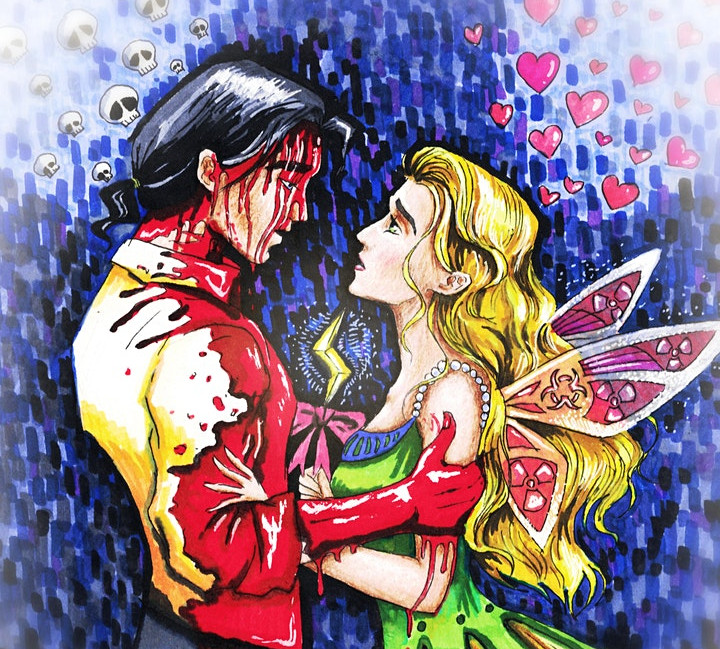by Katharine E. Monahan Huntley
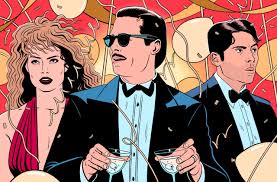
Hollywood out Land ish!

Fig. It. Out.
“And that’s my story.”
With a dramatic flourish and certain finality, dowagers Helen O’Malley and Bow Ross finish the dish.
— Ladies’ Luncheon at Abraham & Strauss, Brooklyn, New York, circa 1957
by Katharine E. Monahan Huntley

Hollywood out Land ish!
by Katharine E. Monahan Huntley
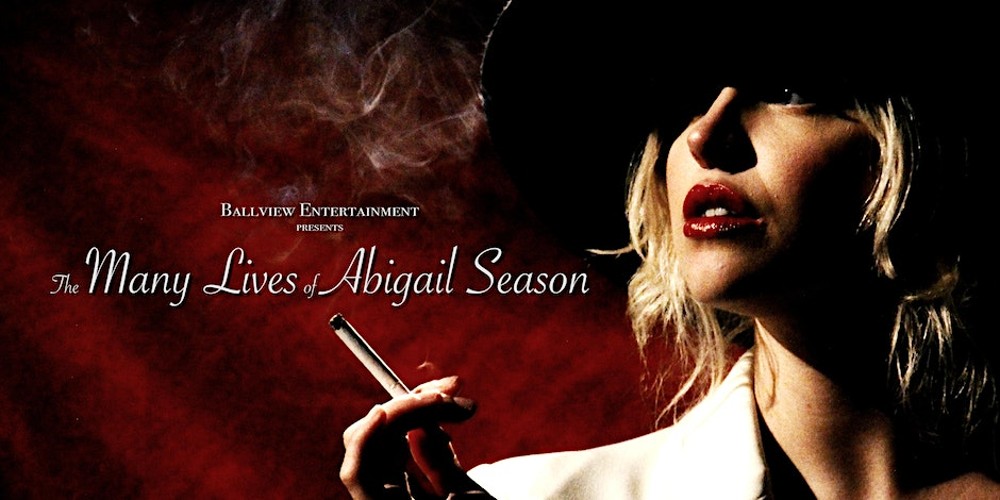
A Puzzling Valley Quagmire.
“Trouble Taps into Paradise.”
“It’s More than a Don Henley Song.”
Candy Ciggies Are De Rigueur.
by Kerrin Ross Monahan
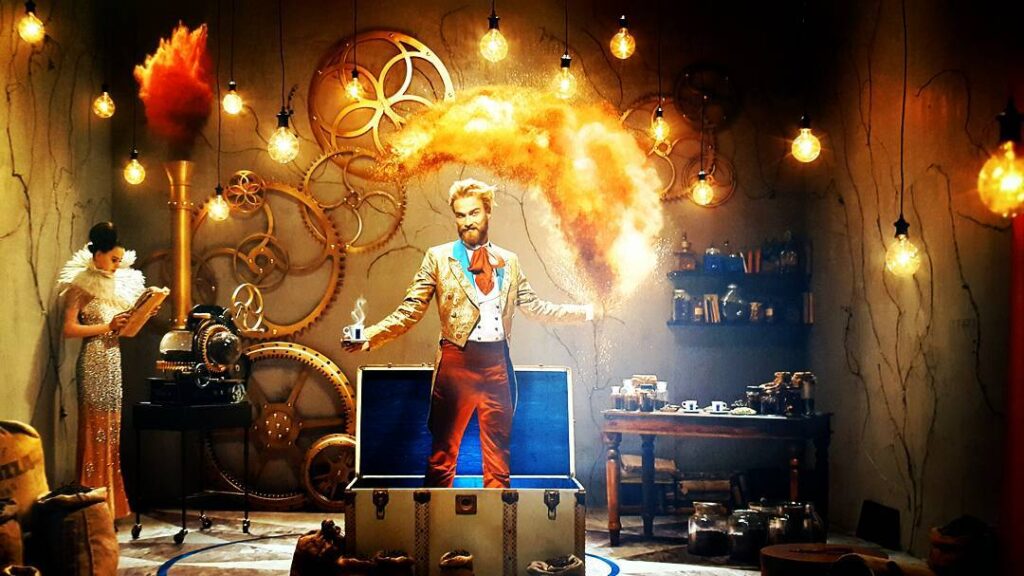
Death in Venice (1911) by Thomas Mann, is a story that deals with mortality on many different levels. There is the obvious physical death by cholera, and the cyclical death in nature: in the beginning it is spring and in the end, autumn. We see a kind of death of the ego in Gustav Aschenbach’s dreams. Venice itself is a personification of death, and death is seen as the leitmotif in musical terms. It is also reflected in the idea of the traveler coming to the end of a long fatiguing journey.
It must also be noted there are no women in the story with prominent roles. The hero’s wife is long dead and his daughter has been married and gone for many years. Any women in the story are merely in the background, unnamed and colorless—totally insignificant. Mann has purposely left them out because they are life givers, the symbol of fertility and birth. (The only one scene where women have an active role is in the degrading and violently promiscuous dream.) There are definite homosexual overtones evident almost from the moment Aschenbach sees Tadzio—the object of his obsession.
By far the most important level of death appears in the crumbling of Aschenbach’s life principles: the giving up and letting go of all those ideals that molded his character and had shaped his work and guided every aspect of his entire life. It is a complete handing over of oneself to all that was heretofore anathema to him. The mind, reason, rationality, and all that goes with it: service, dignity, and restraint all buckle and die—all fall in the wake of the onslaught of passion and chaos.
Dreams play a major role in the story, and, throughout the history of literature, sleep has often been considered to be a form of death. Freud (who was professionally prominent at the time the story was written) believed when one is awake, one’s ego acts as a censor of the libido, however, when a person is asleep and dreaming, there is a repression (“death”) of the ego, or conscious mind, thus allowing the unconscious wishes (which were, for the most part, sexual) to then be fulfilled (Introductory Lectures on Psychoanalysis-Sigmund Freud, Chps. 9, 14). It is ironic that Aschenbach, who had written his book The Abject “as a rebuke to the excess of a psychology-ridden age” (13) succumbs to an egoless state, not only in the last grotesque dream, but directly after it in his conscious mind as well. From this point on, Gustav becomes totally shameless. (We have seen this theme of loss of shame as being a kind of death, and actually leading to literal death as well, in Salman Rushdie’s Shame.)
Mann’s use of Venice as a backdrop is critical. Venice, an ancient city, inexorably sinking beneath the water, a “forbidden spot” (38) with “stagnant lagoons” (28) the “fallen queen of the sea” (36). Venice, with a “faintly rotten scent” (37) “half fairy tale, half snare” (55) “that hid sickness for love of gain . . . (56). The city that had “a disreputable secret [like] his own” (57).
In musical terms, death is the leitmotif, the theme keeps reappearing: heard in the overture (the first stranger Aschenbach sees in Munich), continually sounded in the Venetian passages (more odd men), swelling to a crescendo of hysterical laughter and swirling pipes of Pan, and, in the finale, of fading notes washing into the outgoing Adriatic tide. It brings Wagner to mind, who, with failing health, went to Venice and died there suddenly in 1883. His music was considered to be the highest expression of romanticism in European music and he was the originator of the “music-drama,” wherein the dramatic needs of the story take precedence over the music itself. (Funk and Wagnalls New Encyclopedia Vol. 24, p. 388). There is a touch of irony here, since Gustav had represented the antithesis of romanticism until he met Tadzio. Tadzio’s very name, like “two musical syllables” (32) echoed in the flute notes of Gustav’s orgiastic dream. One is also led to think of the “siren song” of love and emotionalism which led him the break up upon the rocks of passion.
The collection of mysterious emissaries all luring Aschenbach on, starts with the “snub-nosed” red haired traveler with a summer straw hat and rucksack and “long white glistening teeth” (4) positioned under the door of a Munich mortuary. It is here Gustav is seized with the overwhelming desire to travel, which he had never before cared to do. Then, the seedy boat ticket seller with goat-like beard and bony yellow fingers, reminding Gustav of a “circus director” or “croupier” (16). Next, the “horrible old fop” (24) with a “rakish Panama” hat, wig, dyed beard, and hideous false teeth, followed by the “outlaw boatman” in Venice (24) with short snub nose and straw hat, who bared his teeth to the gums (22). Lastly, there is the strolling musician, the “Neapolitan jester” (59) who of course has the ubiquitous red hair and snub nose. These carbon copy agents of death, along with boatmen, porters, managers, and the barber, are all trying to bring Gustav closer to death physically or mentally. (It is only the English clerk at the travel bureau who tries to send Aschenbach out of danger.) We finally see Aschenbach, garishly attired like these mysterious beings: dyed hair, rouged cheeks, with a red tie and a straw hat with a “gay striped band” (70)-and we know his inward degradation has now progressed outward.
Tadzio, of course, is the most significant male figure of all-the primary lure. By not leaving Venice until summer’s end, he is assuring Aschenbach’s death, the final destination on his mad journey. It was Tadzio who unwittingly inspired him to lose his lifelong principles of rigorous duty, discipline, and conservative classical formalism. Tadzio stands for many things: he is Gustav’s muse, he is Art, which “heightens life . . . gives deeper joy . . . consumes more swiftly” (15). Art, which was “war-a grilling, exhausting struggle” (56). He is the essence of beauty, “chaste perfection of form” (25). He is Narcissus, Hyacinthus, Phaeax, Eros, Phaedrus to Aschenbach’s Socrates, his lover, the “charmer” (54) with twilit grey eyes” (74) whose milk white skin was never burnt by sun and sea air (51). Tadzio was also the “crouching tiger” (6) in Gustav’s early hallucination, the “stranger god” in his later demoniacal dream, he was the “pale and lovely summoner” beckoning on the sandbar (75) the plague, the pit, the abyss-Death itself. (It is interesting to note Tadzio, with all his perfect beauty, has imperfect teeth, “rather jagged and bluish, without a healthy glaze” (34), teeth remarkably like all the other emissaries of death.) Ironically, Aschenbacher feels the youth is ill and won’t live long, when actually it is he who is to die.
All his life, Gustav Aschenbach had been figuratively dead. He was caught up in his work, “dour, steadfast, abstinent” (56) to the total exclusion of soul-nourishing feelings. In Venice, after being overwhelmed by Tadzio’s beauty he finally allows the barriers to fall, relaxes completely, and comes alive for the first time in his life. Inspired by Tadzio, he starts writing with emotional intensity, but this turned out to be an arduous and consuming job that left him “exhausted . . . broken” (47). His excessive passions tipped the scale entirely in the other direction and it was this total abandonment of former ideals that killed him. Gustav lacked the balance he felt would have been the artist’s highest joy: when thought and feeling are able to completely merge one into the other (46). He had been able to write solely rationally, then, solely emotionally, but was unable to produce a melding of the two.
It was there in decadent Venice, surrounded by water (symbol of not only birth and baptism, but also of death) that Gustav Aschenbach, led there by Death’s legions, finally gave up the ghost, unable to effect a compromise, a victim in a final terrible battle of the classicism and romanticism gods, caught in the crossfire of what Nietzsche labeled the Apollonian and Dionysian principles. Since Mann has extensively employed paganism and mythology (excluding any Christian references) one can surmise perhaps Aschenbach’s shade would then have been rowed across the Styx (in a black gondola), or more possibly he would have followed Tadzio’s outwardly pointing finger and joined Poseidon’s ranks, plunging “into an immensity of richest expectation” (75) seeking “refuge . . . in the bosom of the simple and vast” [ocean] (31). Gustav thought of the boy as Phaeax, one of the sea god’s sons (29). He had seen this godlike creature “with dripping locks . . . emerging from the depths of sea and sky” (33).
What more fitting manner of leaving the earthly fray than by returning to “the birth of form . . . the origin of the gods” (33)?
Works Cited
Freud, Sigmund.Introductory Lectures on Psychoanalysis. Chps. 9, 14.
Funk and Wagnalls New Encyclopedia Vol. 24, p. 388.
Mann, Thomas. Death in Venice. 1911. New York: Vintage, 1958.
by Katharine E. Monahan Huntley
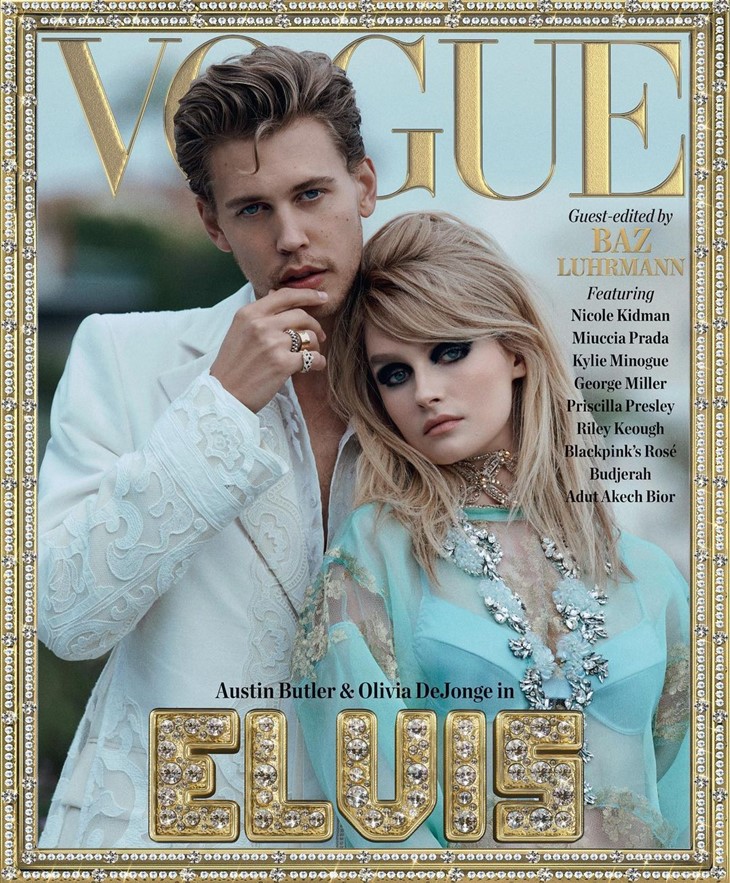
Cool Blue Twist and Pout.
“Dizzy, My Head is Spinning.”
The Butler Did It!
by Katharine Elizabeth Monahan Huntley
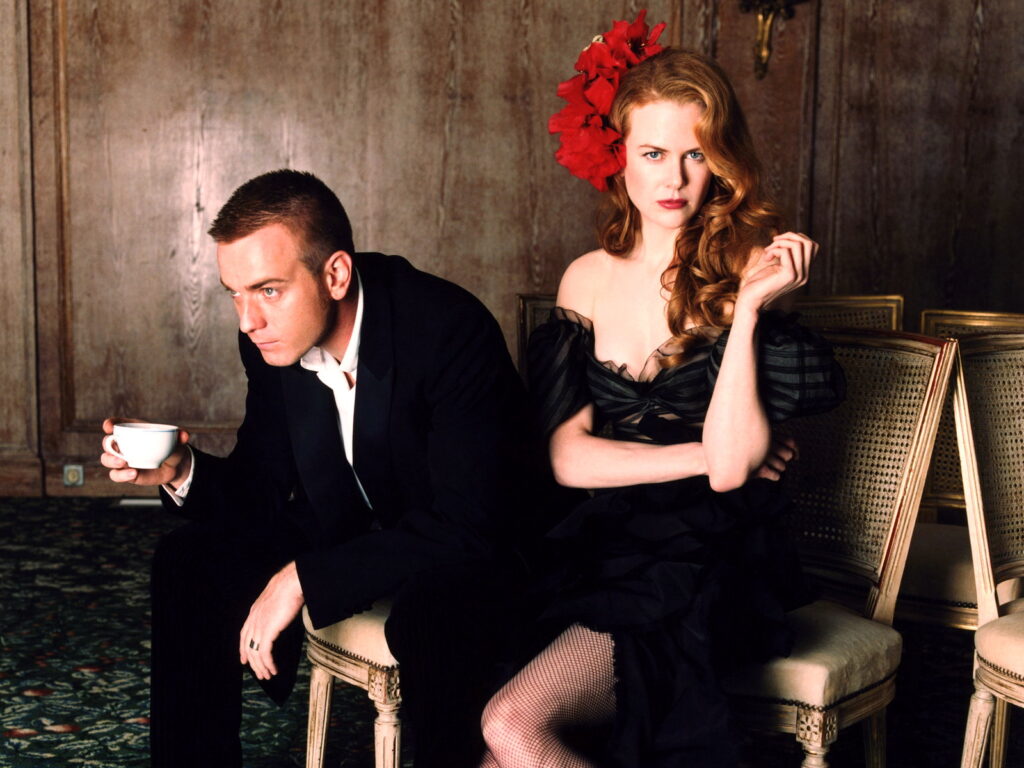
“Here we are now, entertain us.”—Nirvana
After Strictly Ballroom and William Shakespeare’s Romeo + Juliet, Baz Lurhman understands what the audience expects from a Bazmark production—a “spectacular spectacular” spectacle. He presents just that with the theatrical enchantment Moulin Rouge.
Unabashed in its excess of sensation, this many splendored song and dance collage celebrates the burlesque and carnivalesque of bohemian life. Amid the iridescent artifice of men who preen and prance, and bawdy beautiful courtesans that can-can, a doomed romance reclines in a courtesan’s boudoir. Tragic and passionate—what falling in love is all about.
Ewan McGregor is dreamy, Nicole Kidman creamy. As Satine, she allures with red smeary lipstick and a longing for a legitimate acting career. McGregor’s Christian represents idealism in its purist form.
Extravagant extravagance, indeed. Alas, however, is stark reality—fate is fickle and time waits for no one. Life may be a cabaret old friend, but right outside is the boulevard of broken dreams and all that jazz.
Why the audience for Moulin Rogue should really stop and cheer is the Bazman’s insistence on relating a full bodied fable—underscored by the villain who demands: “What’s the story?” A question frequently unasked by Hollywood producers in the pursuit of percentage and the show must go on.
Talk to me Baz Lurhman, tell me all about it.
Please note: The original 2021 title of this review is Get Yer Ya-Ya’s Out!
“Perspicuity.”
God Bless America, Huh?
What the F*** Did All That Mean?
I Missed Nothing. (Blind.)
by Kerrin Ross Monahan
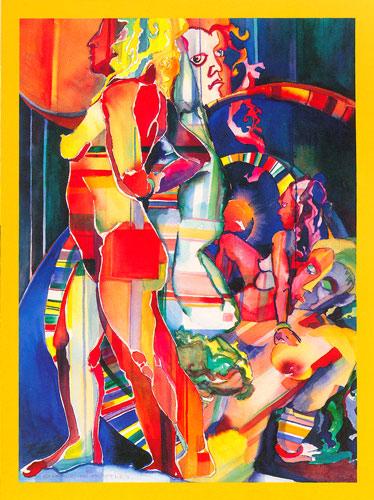
| When you have six kids in ten years you tend to miss the nuances, the fine points of what’s going on. For instance, you’re busy doing nothing sitting in the gas crunch and because you had a personalized plate (vanity) you could only get in the long lines at seven a.m. with a screaming infant or two, on odd days only. I followed Patty Hearst as little as possible, and Watergate was hard to miss. Boring. So have a nice day and I’d like to punch out that little round yellow face. You can tell who’s stuck way back there when they still say that to you. Forget the lava lamps and mood rings—I didn’t need a ring to figure out what state I was in. Beanbag chairs were tacky so was avocado anything, especially shag. Down vests and trail mix were okay, I guess, but if I see another macramé plant hanger interspersed with wooden beads it’ll be too soon. No, I was of aqua fondue pots and terrariums in a cool green Almaden gallon jug. And Hang Ten and decoupage and Bury My Heart at Wounded Knee, not Rod McKuen and his ridiculous dog. Love Story was never having to see sap acting again* and who cares about streaking because I saw plenty of little bare bottoms everyday. Bicentennial and an ice skater’s coif satin jackets. Bare Trap sandals that’s what I saw along with five million in paperback sales: bodice rippers. Vietnam then was whacked out Vets committing suicide it was more interesting to see all those Italians killing each other on the screen after they cooked the best spaghetti to die for. Throwing up Campbell’s pea green soup—I’d rather watch kid Spielberg’s two million dollar nuts and bolts come after you in the steel tank at Universal. Tonsils and tonsils and stepping over zonked out freaks on Telegraph, dragging a five year old to the throat doctor and loud discos in convention hotels filled with mid-life plaid polyester. Irishmen don’t look good in all white and besides they don’t like gold chains. Parochial plaid and Sister Said cupcake sale and Lip Smackers whoever dreamt that up was a genius just add strawberry (red dye #5) to Vaseline and hang it from a cord for the premenstrual set. Going from one disaster at home to another give me a dime for every time the milk hit the fan and I’ll show you an operation to rival Dreyer’s. The upside down leviathan and flames in the Big Guinea and the psycho with the life insurance out of a machine was nothing. Take back the Italian horn I get enough virility thanks and leave your Puka shells behind with the tooled leather belt embossed colored flowers and cannabis bronze buckle. Keep on truckin’ away from me because I’m waiting for the carpenters it’s only just begun between the pet rocks and pop rocks and it’s all over with the flaming Pintos. Burn your bellbottoms and chuck the turquoise and silver squash blossom ‘cause the baby just signed his ass over to Uncle Sam, the same ass that was pampered once upon a time. Say goodnight Mary Ellen, stay high yellow brick road—gotta do-run-run. |
Writing Utensil.
Only the Best Graphite Plays!
Very Pretty Words.
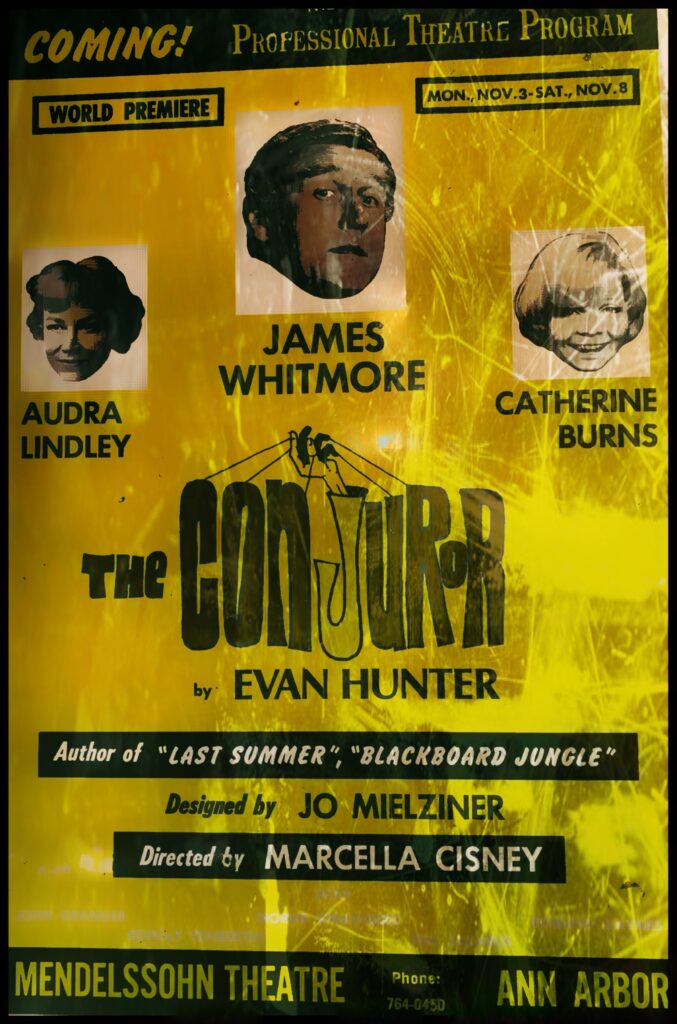
O Kenny boy, the pipes, the pipes are calling . . .
The Sherry’s the Stage.
Antonia’s Zings Rage.
Murderinos, Sage!
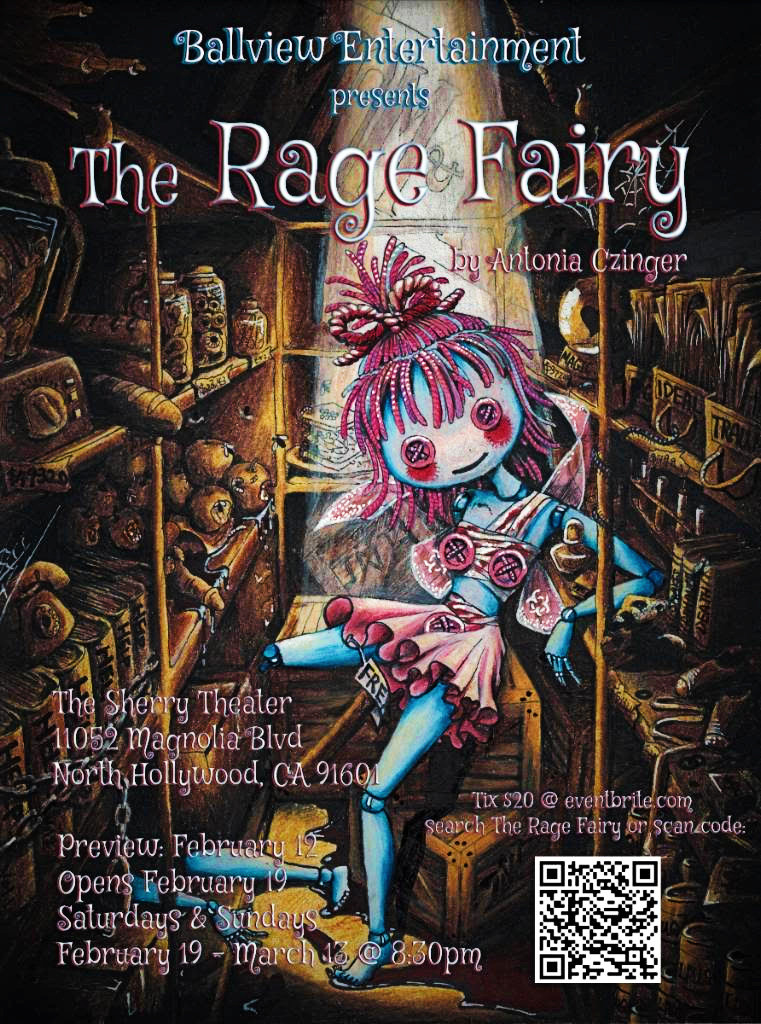
Nothing can stop the Rage Fairy from finding love, including the knowledge that her dream man is a literal murderer. All it takes is a little reality-bending. A manic fairy with a chaotic attachment style goes looking for love in all the wrong places–including in the arms of a [aforementioned] murderer. Subsequently, she is haunted by a cadre of murdered girls, even as she tries to maintain the illusion all is well with her dream man.
Written and Directed by Antonia Czinger.
Produced by David Dickens.
